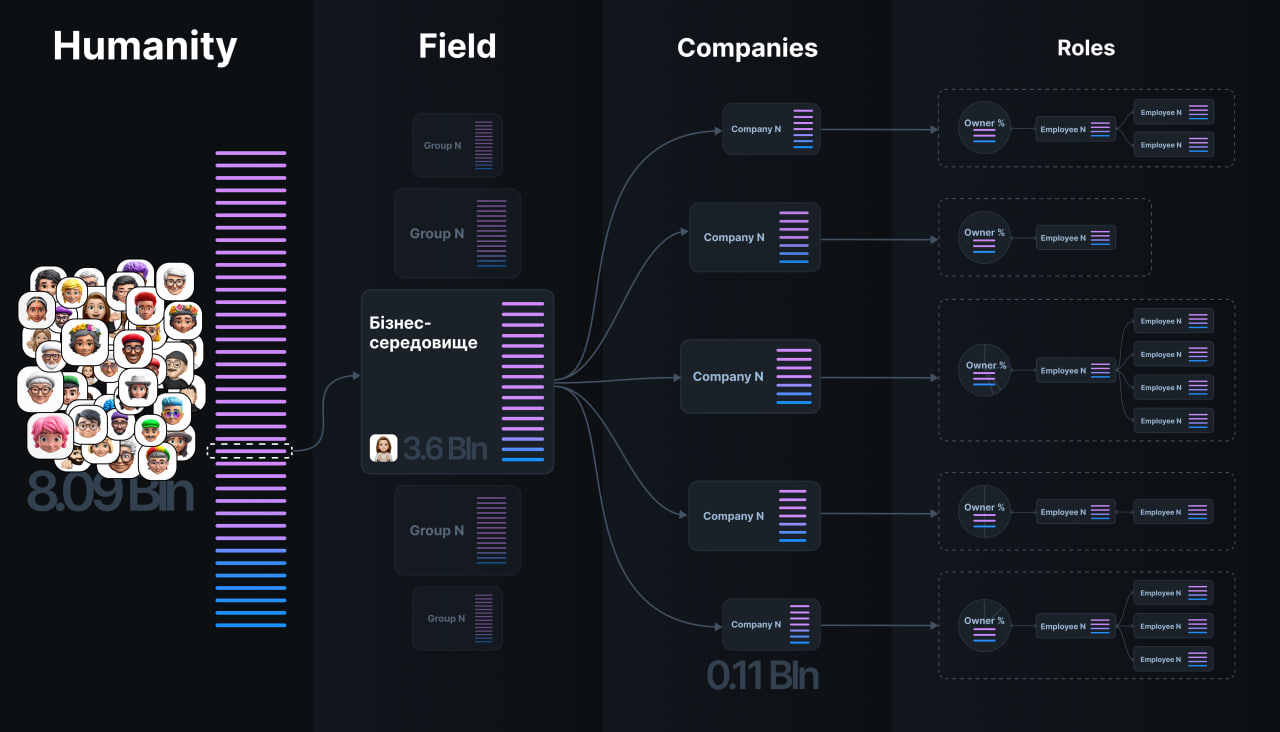Introduction
At Vymex, we've set two key goals for ourselves. The first is to answer a critical question: how can we significantly improve business performance? This involves structuring the environment, breaking down theories, and formulating a clear hypothesis — in other words, finding the solution. The second goal is to develop products that not only impact companies' operations but also enhance their overall efficiency, no matter the industry, size, or location.
It’s crucial to distinguish between solutions that optimize how companies operate and products created solely for commercial gain. Today, we’re sharing the solutions we've discovered at Vymex, which have the potential to drastically shift the effectiveness of the modern business landscape. Once these solutions are fully understood, the need to discuss specific products will naturally fade away.
The Scope of the Challenge
Let’s start with the scale of the task we’re tackling. The world is home to 8.2 billion people, all contributing to different categories of outcomes—one of which is business. There are 110 million companies globally, employing 2.1 billion people across various roles, from owners to employees. With Vymex products, we aim to impact the performance of each individual company, ultimately influencing the business landscape and humanity as a whole. By optimizing resource usage within the “business environment” category, we can free up resources for other areas.
To effectively shape outcomes, it’s crucial to understand the entire structure of the field we’re working in.
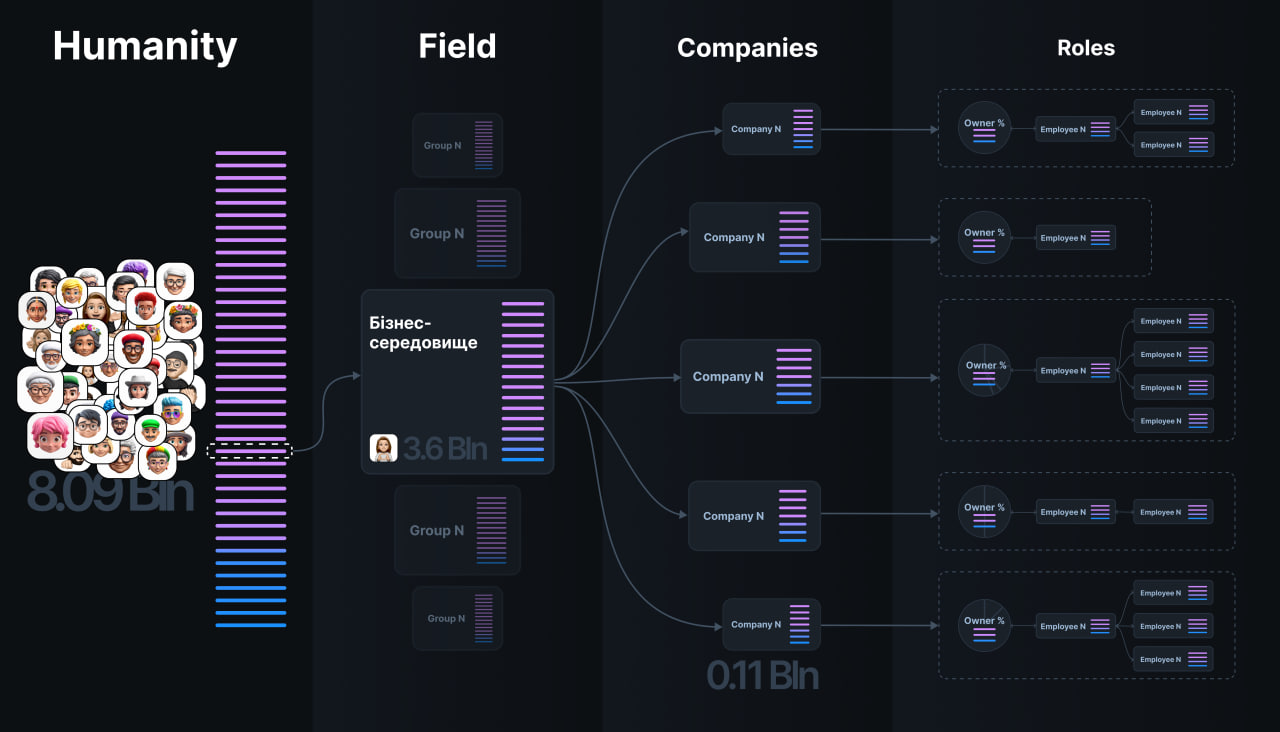
A Glimpse into How Business Operates Today
Today’s business landscape is defined by some eye-opening stats: >90% of new companies don’t make it past the three-year mark, the average age of a successful entrepreneur is 40, and financial losses due to inefficient management in the U.S. alone hit a staggering $550 billion. And that’s just scratching the surface of what’s happening among the 110 million businesses worldwide.

To change these numbers, we’ve spent a lot of time diving deep into the “business environment,” analyzing models, and identifying the root causes of common challenges. At the same time, we’re developing products based on our insights and solutions. If our hypotheses are correct, business efficiency will see significant improvement in the next decade.
Defining the Term "Company"
It’s tough to create products for companies when there isn’t a clear, universal definition of what a "company" truly is. During conversations, we often encounter the fact that everyone has a different understanding of what a company represents. Some think it’s about commerce, products, people, or even legal jurisdiction — but these are just various aspects. What’s needed is a broader concept, a term that everyone can consistently understand. More importantly, this term should reflect the true nature of a company and help build a framework that explains the results of business activity.
To us, a company is a distributed balance of resources across roles, which evolves over time into a new balance of resources. The balance of resources refers to the collective information within the company, which we manage based on its goals. The concept of results is simply one perspective on this balance at any given moment.
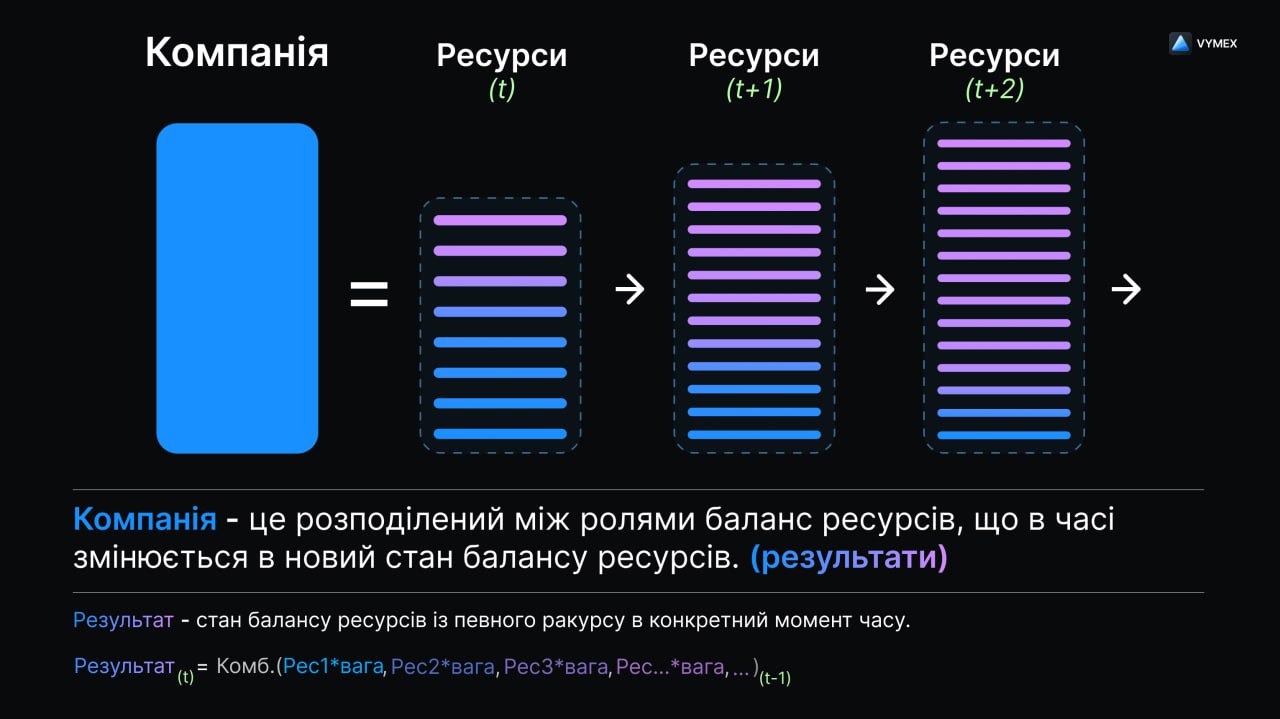
In short: "company" = "resource balance" = "results."
So, how does a company function as a distributed balance of resources? Every company has specific outcomes it strives to achieve, and these outcomes are divided across different roles within the company. It’s important to distinguish between people as individuals and the roles they fulfill within the company. A role can exist without a person occupying it — it remains a placeholder for company information. For instance, when a founder creates a company, they take on the roles of "owner" and "employee," or they hire people and delegate the "employee" role, distributing the company’s resource balance among them. As the company scales, so do the results and the amount of information it manages — more people, relationships, money, and so on. As a result, new roles emerge, redistributing the resource balance accordingly.
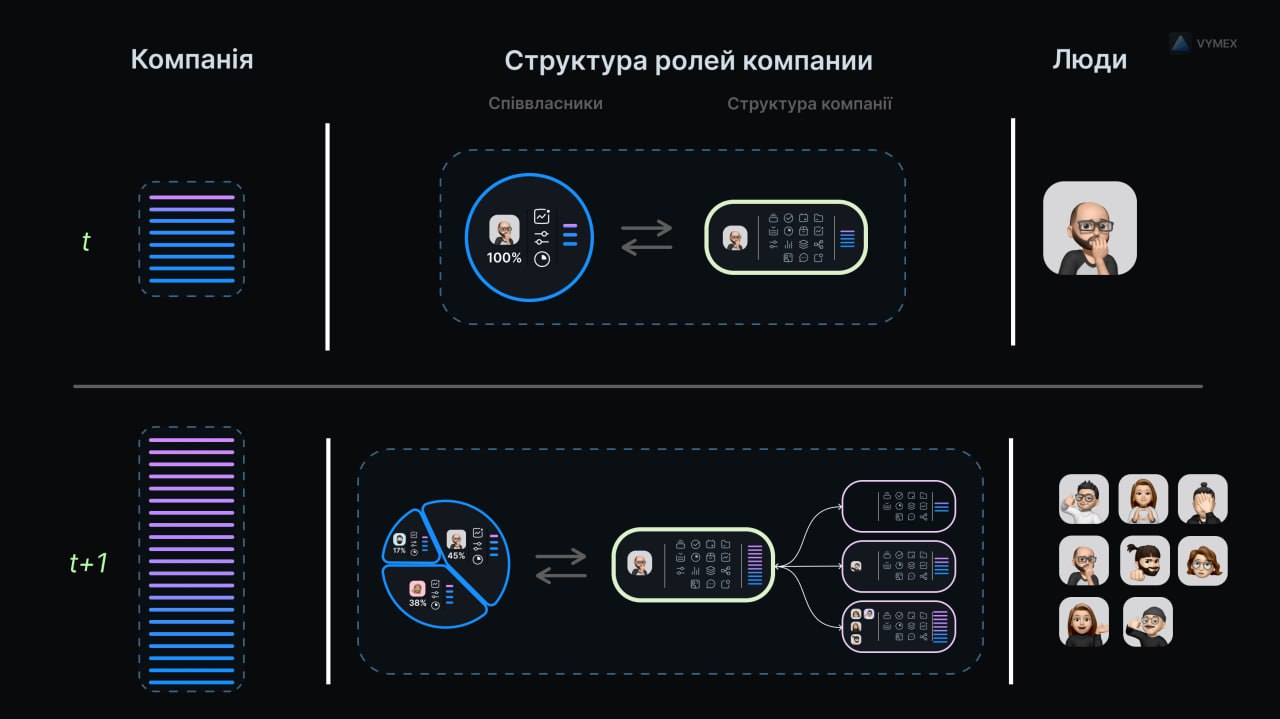
To manage structure and outcomes in companies, specialized management systems are used. By “management systems,” we mean the tools that create a hierarchy of results, ensuring everything stays under control as the resource balance shifts.
Imagine the brain as a sphere, a hub that collects and processes information, combining it over time into new outcomes — or, more precisely, into a new state of resource balance, as per our theory. The brain grows, absorbs more information, and organizes it, but it’s still limited by the size of that sphere. It can’t hold onto everything; some information fades out of focus as goals and priorities shift.
To scale this resource balance, people create various tools to store information — management systems. This can be anything from a notebook or a piece of paper to spreadsheets or a mobile device, all of which allow us to organize vast amounts of information, access it at any time, and share it with others.
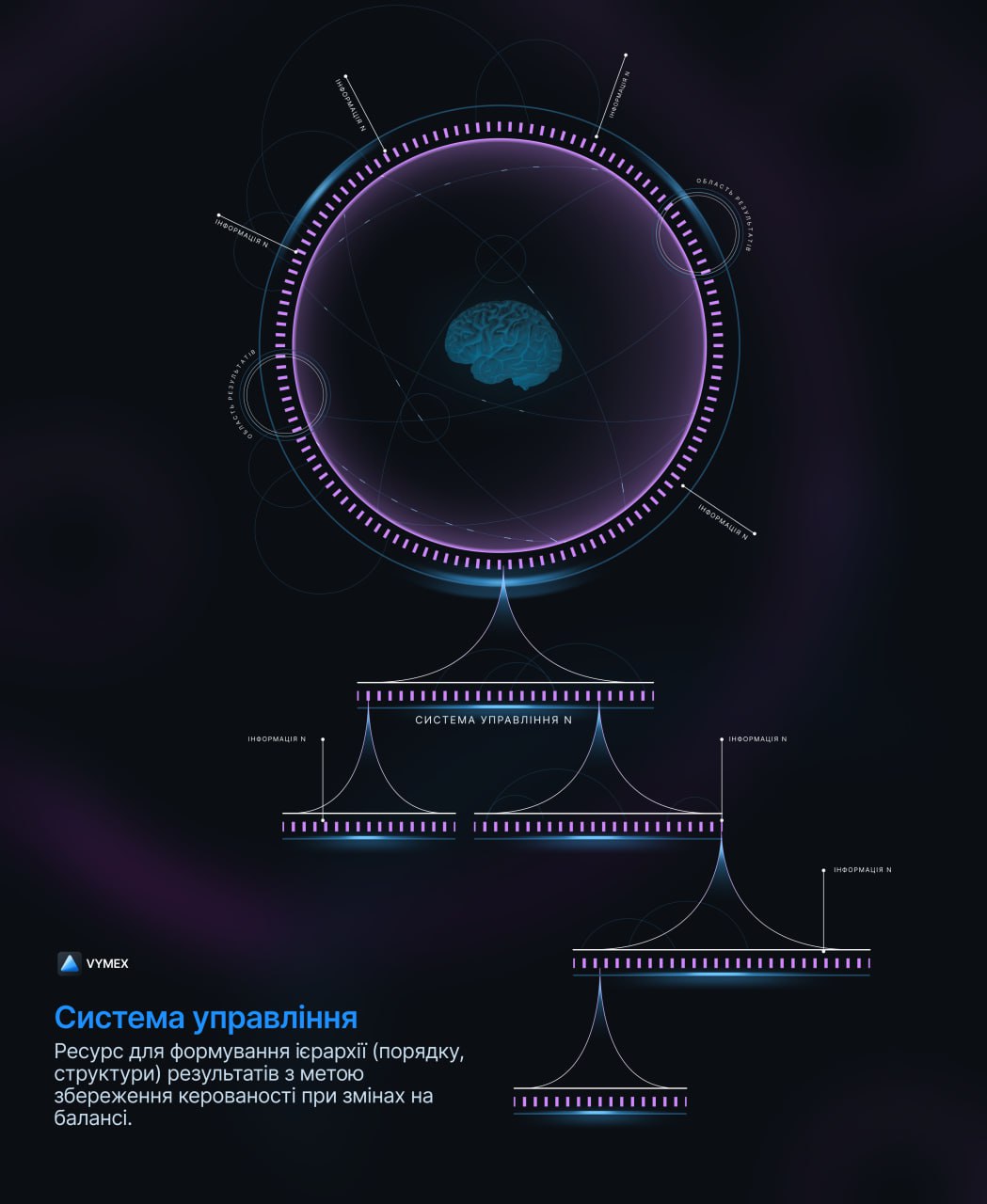
Key Challenges Faced by Companies in Terms of Management Systems
Modern approaches to building and utilizing management systems for driving business outcomes are often ineffective. Yet, they’ve become a crucial part of the business ecosystem’s efficiency norms we’ve come to accept.
When we look at young companies (less than 36 months old) with fewer than 100 employees, we can identify several recurring challenges that are tough to manage effectively
1. Separation of owner/employee roles
From the moment a company is formed, it’s crucial to separate the roles of an owner and an employee. This distinction makes it easier to bring in new co-owners through investment and make collective decisions about ownership, while also managing employee roles, even if one of the employees happens to be a co-owner. Entrepreneurs often overlook this early on, thinking it’s not a priority, but that’s a mistake that can lead to significant strains on the business later. With the right structure in place, company ownership can be divided proportionally, while workload is distributed based on specific roles.
2. Distribution of information between roles.
The company’s resources are divided across roles that shape its structure. If the methods of structuring the company and distributing information across roles are ineffective, the balance of resources won’t align with the company’s goals. Here’s the reality: if you need to know where a particular resource (information) is within the company, you’re limited by your brain’s ability to remember. There are multiple dimensions to information—documents, metrics, tasks, files—each requiring specialized tools that need to be structured appropriately with controlled access levels. When properly structured, you wouldn’t need to remember where things are; you’d spend far less time searching for what you need. This also affects data security, team onboarding, and a range of other operational outcomes.
3. Servicing changes in company size.
Company growth = increased resource balance. As the company scales, how well its management systems are set up becomes crucial. The introduction of new resource categories often requires adjustments to existing systems or the integration of new ones. This can be a distraction for the team and, worse, lead to critical misconfigurations. Today, companies rely on a patchwork of systems like ERP, spreadsheets, CRMs, file-sharing platforms, and messaging apps. At scale, these systems tend to fail, causing resource loss. Large companies mitigate this with expensive ERP systems and large teams, but for small businesses, this can be devastating—often reflected in the high failure rates of startups.
4. Changing contexts (moving between roles).
The human brain constantly switches from one task to another, and in a company, these tasks often belong to different parts of the structure. It’s essential that this switching uses as little mental bandwidth as possible. If your role lacks a management system with all the relevant information, the switch will be inefficient. Without a proper place to store updated information, further inefficiencies arise. A well-designed management system will ensure that all necessary information is intuitively accessible to everyone involved.
5. Delegation of contexts (onboarding/offboarding)
Hiring a new person is simply transferring a part of the company's resource balance to the new person. The way the logic of companies is currently shaped prevents entrepreneurs from forming management systems in the early stages so that the delegation of a part of the company's balance sheet is effective in relation to its goals. If we understand our understanding of the brain and management systems, then at the moment, when people add a new person to the company, they transfer information from the brain to new brains, which now needs to be managed, and not just open a role in their management system where everything is structured by dimensions using basic tools. Now, each time you have a different understanding of what a company is, and then there is a “zoo of systems” that is uniquely configured each time, and as a result, a person has to spend titanic efforts to understand everything and be immediately effective in their part of the balance sheet, and other team members are also involved in onboarding, which also costs a lot of business. The only thing worse is that an employee may quit before completing the onboarding due to the stress of it.
6. Dismissal of important people from the company.
If you accept the theory of how the brain stores information and combines it into new results, and builds management systems for this, it is not difficult to understand the consequences of firing people from the company. And given the methods of building company management systems that are used today, the consequences are often fatal for the balance of resources.
7. Calculations of changes in the company's budget over time.
This is about planning the company's financial perspective, which requires accuracy in the formation of categories and volumes, as well as a logically structured management system where the team makes plans for its part of the balance sheet. Today, it is difficult for businesses to build effective management systems in the early stages to plan the company's financial results.
What’s the Weak Link in the Model?
One common challenge we often encounter in communication is that entrepreneurs tend to highlight a single core aspect of their company — whether it’s products, sales, marketing, the team, or finances. But the truth is, there isn’t one key thing in a company. What matters is a specific outcome at a specific point in time, relative to which we assess the balance of the company’s resources. For example, if we’re looking at the result — “number of sales” — certain resources will take priority at that point in time. However, if we shift our focus to a different metric at the same moment, the weight of those resources changes, and suddenly, sales may no longer be the most important thing.
The idea that a company is simply a set of operations is outdated. The perception of a company as merely operations has long prevented the creation of a unified management system capable of covering all company outcomes. Various ERP systems attempt this, and some come close to capturing a significant portion of a company’s operations. But we also understand that as the complexity grows, so does the cost, making it a steep investment for new and smaller companies. It’s impossible to pinpoint one central aspect because what matters to a company at one point might be sales, but at another time, it could be team communication.
That’s why we introduced a logical division into basic and project-based outcomes. Basic outcomes include company formation, communication between roles, file management, adding and removing employees, etc.
With this kind of separation, the notion of a "key necessity" disappears, and instead, we talk about "basic necessities". From the moment a company is created, an ecosystem emerges that allows its basic needs to be met with minimal resource expenditure, which in turn enables the company to scale its role structure and onboard new people efficiently without heavy resource consumption.
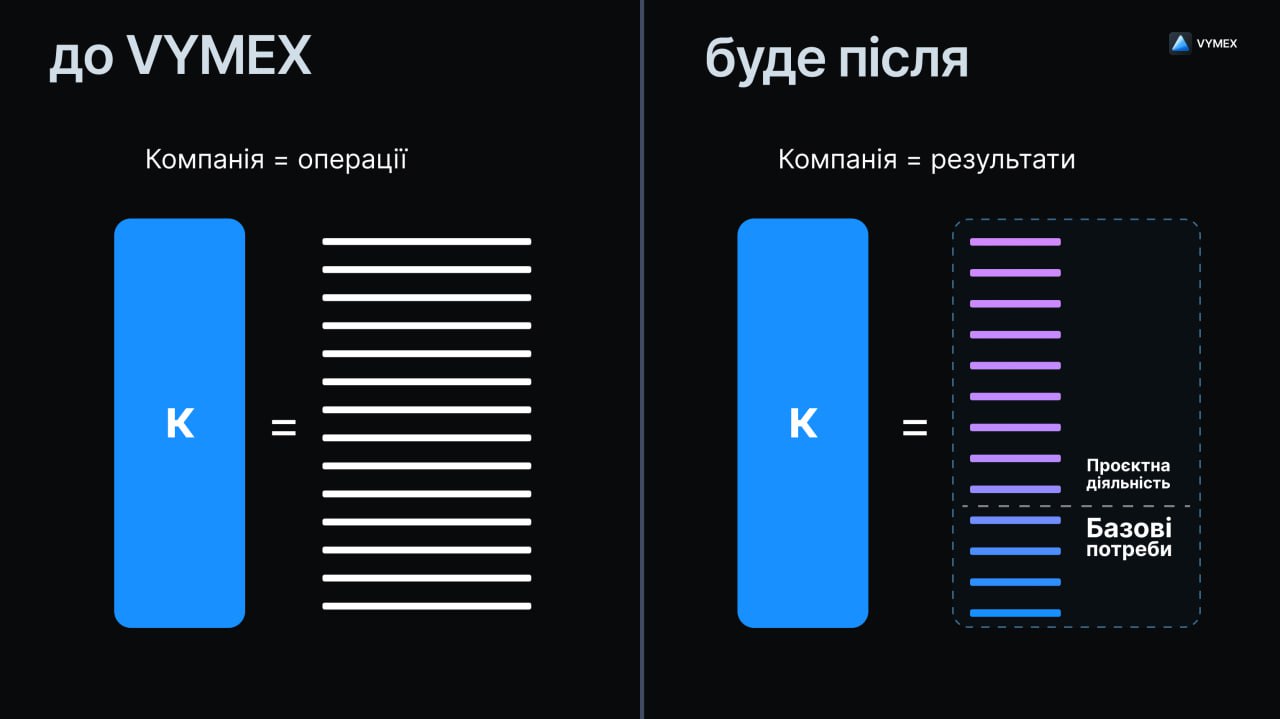
When trying to understand the types of outcomes that fit into this system, it’s crucial not just to memorize them but to grasp the principle behind their categorization.
If we were to map out all the results companies aim for on a single diagram and structure them based on their frequency of occurrence, we’d notice that some outcomes repeat consistently across companies. By categorizing these repetitive outcomes, we create a group of results that every company, in some form or another, sets up from the very beginning.

What we’ve done at Vymex is similar in concept to familiar ecosystems like iOS or Android. In the past, people used separate devices for different tasks—phones, cameras, calculators, music players, and so on. Apple looked at the 8 billion people and identified the results they need to achieve their day-to-day goals, creating an ecosystem to fulfill these basic human needs. Google quickly recognized this shift and developed Android. Now, when you buy a smartphone, it already has everything you need to meet your basic needs. These needs are shaped by the predictable outcomes people face. Later, millions of developers build project management systems into the platform—various apps we download depending on specific needs and outcomes—or develop other specialized devices for more specific types of results.
Just as each person is unique in their outcomes, so are companies. However, by applying the method we’ve outlined, it becomes much easier to create something that works for every individual unit within a structure.

What Solution Are We Offering?
The solution lies in redefining the structure of management systems to categorize results into dimensions and incorporate the recurring outcomes into a single management system. It’s not just about having tools or structures to manage different dimensions—it’s about having a system where roles are clearly separated from the start: owners, employees, then role structure, tools set up within it, and the ability to fill it all with unique information according to the roles and dimensions. The hardest part is understanding how all of this behaves over time as the company grows or changes.
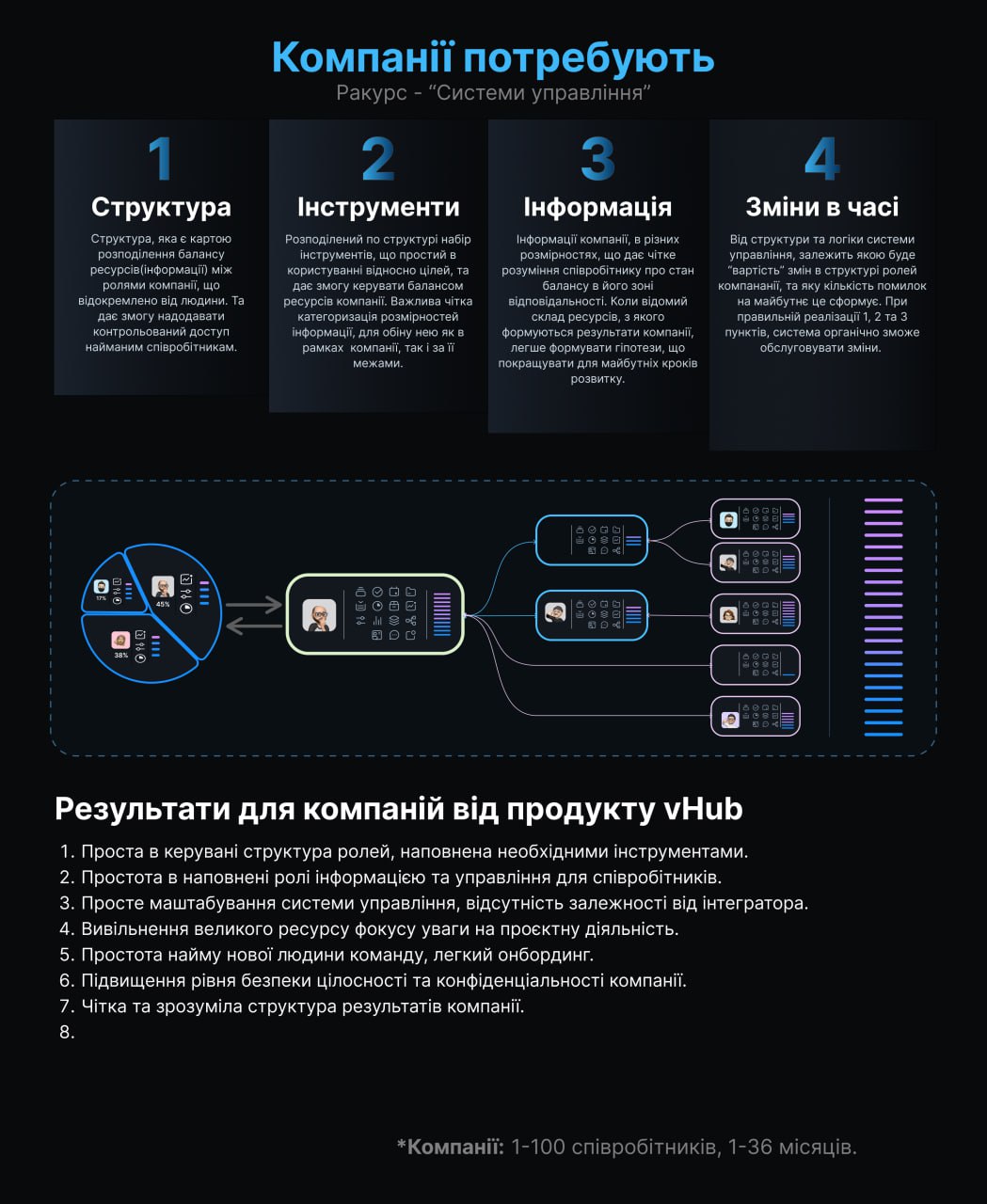
If you look at the results of a person in a business environment, you can easily divide them into groups of results:
- owner
- employee
- candidate
- investor
The ecosystem of products we’re developing is specifically designed to separate roles into individual products that cater to people's needs within the company’s resource balance.
A system that manages basic needs will ensure the controlled growth and downsizing of a company, preserving the resource balance, which is effectively distributed across roles and serves as a hub. This allows the company to scale organically without constantly worrying about potential missteps, spreadsheets, or an endless zoo of disconnected systems. The system ensures predictability at every stage, accounting for all angles of growth. Implementing such a system will free up resources for successful project execution.
In the future, the rise of such systems will reshape the business landscape. A handful of strong companies will emerge, offering services to meet basic needs, reducing the reliance on spreadsheets and various, often disconnected, services and ERP systems. Other companies will provide services that focus solely on project activities, helping businesses achieve their goals more efficiently.
Conclusion.
If we are right in our vision of this model and the structures we use to describe business operations, challenges, and solutions, then we have already created something that will impact people’s lives. Resources previously consumed by business operations—regardless of one’s role—will be redirected toward other areas that need improvement.
We can’t rid businesses of all their problems, but we can establish frameworks and categories that define the field. That’s already a significant achievement. From there, we’ll be able to understand why challenges arise in companies and build products based on that understanding. These products will boost company efficiency, which is the best marketing any business can have.
The statistics on business failure rates, the average age of successful entrepreneurs, and all those metrics reflecting business performance will improve—efficiency will become the new standard.
We hope that within our lifetime, our team will witness and understand how people’s quality of life improves due to the enhancements we’re bringing to company operations.
